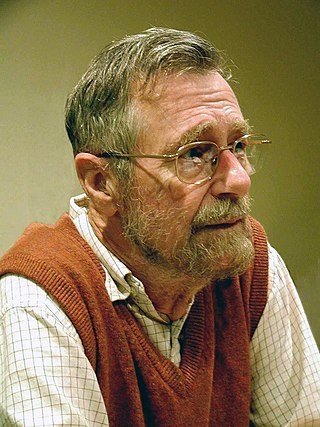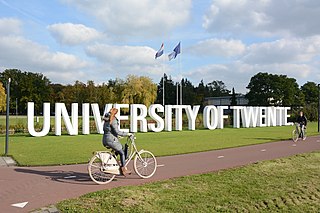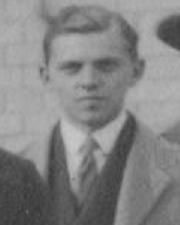
Edsger Wybe Dijkstra was a Dutch computer scientist, programmer, software engineer, mathematician, and science essayist.

Tic-tac-toe, noughts and crosses, or Xs and Os is a paper-and-pencil game for two players who take turns marking the spaces in a three-by-three grid with X or O. The player who succeeds in placing three of their marks in a horizontal, vertical, or diagonal row is the winner. It is a solved game, with a forced draw assuming best play from both players.

Willem-Alexander is King of the Netherlands.

The University of Twente is a public technical university located in Enschede, Netherlands. The university has been placed in the top 170 universities in the world by multiple central ranking tables. In addition, the UT was ranked the best technical university in The Netherlands by Keuzegids Universiteiten, the most significant national university ranking. The UT collaborates with Delft University of Technology, Eindhoven University of Technology and the Wageningen University and Research Centre under the umbrella of 4TU and is also a partner in the European Consortium of Innovative Universities (ECIU).

The Delft University of Technology is the oldest and largest Dutch public technical university, located in Delft, The Netherlands. It specializes in engineering, technology, computing, design, and natural sciences.
The Royal Netherlands Navy is the maritime service branch of the Netherlands Armed Forces. It was founded on 8 January 1488, making it the third-oldest naval force in the world.
The Centrum Wiskunde & Informatica is a research centre in the field of mathematics and theoretical computer science. It is part of the institutes organization of the Dutch Research Council (NWO) and is located at the Amsterdam Science Park. This institute is famous as the creation site of the programming language Python. It was a founding member of the European Research Consortium for Informatics and Mathematics (ERCIM).
ALGOL 60 is a member of the ALGOL family of computer programming languages. It followed on from ALGOL 58 which had introduced code blocks and the begin and end pairs for delimiting them, representing a key advance in the rise of structured programming. ALGOL 60 was one of the first languages implementing function definitions. ALGOL 60 function definitions could be nested within one another, with lexical scope. It gave rise to many other languages, including CPL, PL/I, Simula, BCPL, B, Pascal, and C. Practically every computer of the era had a systems programming language based on ALGOL 60 concepts.
The THE multiprogramming system or THE OS was a computer operating system designed by a team led by Edsger W. Dijkstra, described in monographs in 1965-66 and published in 1968. Dijkstra never named the system; "THE" is simply the abbreviation of "Technische Hogeschool Eindhoven", then the name of the Eindhoven University of Technology of the Netherlands. The THE system was primarily a batch system that supported multitasking; it was not designed as a multi-user operating system. It was much like the SDS 940, but "the set of processes in the THE system was static".
The ZEBRA was one of the first computers to be designed in the Netherlands, and one of the first Dutch computers to be commercially available. It was designed by Willem van der Poel of the Netherlands Post, Telegraph and Telephone, and first delivered in 1958. The production run consisted of fifty-five machines, manufactured and marketed by the British company Standard Telephones and Cables, Ltd.

The Electrologica X1 was a digital computer designed and manufactured in the Netherlands from 1958 to 1965. About thirty were produced and sold in the Netherlands and abroad.
The ARRA was the first Dutch computer, and was built from relays for the Dutch Mathematical Centre, which later became the Centrum Wiskunde & Informatica (CWI).
Carel S. Scholten was a physicist and a pioneer of computing.
The Netherlands participated in the Eurovision Song Contest 1996 with the song "De eerste keer" written by Piet Souer and Peter van Asten. The song was performed by Maxine and Franklin Brown. The Dutch broadcaster Nederlandse Omroep Stichting (NOS) returned to the Eurovision Song Contest after a one-year absence following their relegation in 1995 as one of the bottom six countries in the 1994 contest. NOS organised the national final Nationaal Songfestival 1996 in order to select the Dutch entry for the 1996 contest in Oslo, Norway. Five acts competed in the national final which consisted of six shows: five semi-finals and a final. Five entries qualified from to compete in the final on 3 March 1996 where "De eerste keer" performed by Maxine and Franklin Brown was selected as the winner following the votes from 13 regional juries.

The bombing of the Bezuidenhout took place on March 3, 1945, when the Royal Air Force mistakenly bombed the Bezuidenhout neighborhood in the Dutch city of The Hague, resulting in the death of 532 people.

JonkheerAlexander Ollongren is a professor emeritus at Leiden University. He serves on the Advisory Council of METI.
The quadrennial Dutch hacker convention is a hacker convention. It reoccurs every four years at different cities around the Netherlands. Nowadays, it was first held in 1989. In the past, it was organized by Hack-Tic magazine, and currently it is organized by the IFCAT Foundation.
A stichting is a Dutch legal entity with limited liability, not aiming to make profit, with no members or share capital, that exists for a specific purpose that is serving a public, social or an idealistic interest. A stichting is allowed to make profit but the legal condition is that this profit must be spend on achieving the foundation's goals. This form of entity makes it possible to separate functions of ownership and control.
Jacob Anton "Jaap" Zonneveld was a Dutch programmer who, with Edsger W. Dijkstra, wrote the first ALGOL 60 compiler.

Karl Heinrich Weise was a German mathematician. In 1956 he was the president of the German Mathematical Society.









